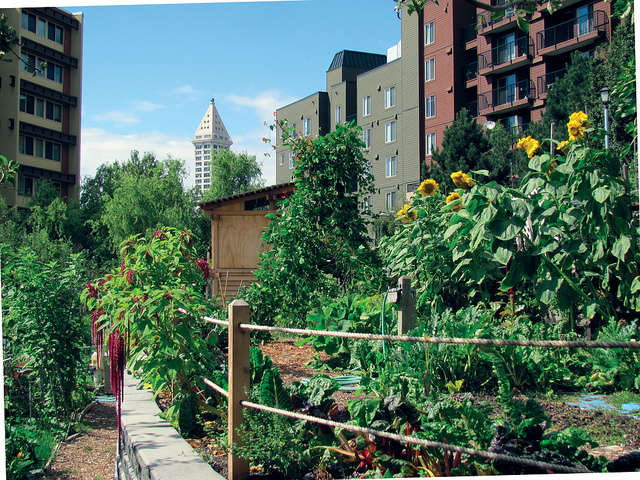The 7-Second Trick For City Blooming
The 7-Second Trick For City Blooming
Blog Article
City Blooming Fundamentals Explained
Table of ContentsThe 30-Second Trick For City BloomingCity Blooming Things To Know Before You BuySome Of City BloomingThe City Blooming PDFsLittle Known Questions About City Blooming.
Fascinated in expanding food available in the City of Chicago? Considering beginning an area garden? Changes to the Chicago Zoning Ordinance allow agricultural uses like neighborhood gardens and urban ranches in lots of parts of the city. Below is a list of frequently asked questions relating to the regulations and guidelines that cultivators should consider when intending a metropolitan agriculture task.
The zoning change does not change any kind of other codes dealing with composting, structure permits, purchasing or leasing City possessed property, company licenses or ecological contamination. There are existing codes that regulate these problems and they continue to be completely result and might be suitable to your job. Area yards are commonly possessed or taken care of by public entities, public companies or community-based companies and maintained by volunteers.
Urban farms grow food that is meant to be marketed, either on a nonprofit or for-profit basis. Due to their industrial objective, metropolitan ranches require a service permit.
Not known Incorrect Statements About City Blooming
Composting is enabled however only for plant material that is produced and utilized on website. The quantity of compost product can not go beyond 25 cubic yards at any provided time according to the criteria in 7-28-715 of the City's Municipal Code. Yes. Because the dirt at the majority of new yard sites needs modifying, garden compost, dirt, timber chips, or various other materials can be acquired to create or improve the growing room - urban gardening.

If a structure license is required after that the hoophouse will be thought about an accessory building. You can learn even more about the structure authorization demands by speaking to the Division of Structures. The 25,000-square-foot size restriction is intended to stop a solitary community garden from dominating a given block or detracting from the block's existing property or business personality.
The limitation does not apply to yards located in Public Open Space (POS) areas. Can there be even more than one neighborhood garden that is 25,000 square feet on a solitary block? Yes. The size limit puts on specific yards, not to private blocks. No. Secure fencing is not required, however, gardens that have big auto parking areas might be needed to mount fencing or other landscape design features.
Not known Factual Statements About City Blooming
B1 & B2 areas call for that all commercial use activities be performed indoors. R areas restrict commercial activity. The regulations reflect the purpose and intent of the Zoning Code. Is fence needed for metropolitan ranches? Yes. Fencings might be called for, together with landscape design and testing, for certain parking lot and outdoor work or storage areas depending on place and the particular activity occurring.
Yes. Urban ranches call for building click to read more authorizations and zoning authorizations before building and construction. Various other kinds of city testimonial might be called for depending upon certain structures, tasks, dimension, landscaping, licensing, public heath and stormwater monitoring concerns. Most of these needs are recognized in the task design or allowing procedure, nevertheless, the applicant might be accountable to independently recognize certain licenses or permits that might be needed.
Yes. The sort of permit is determined by what is taking place at the site. The Division of Company Matters and Consumer Protection can assist figure out the certain kind of company permit that's required. Yes. Off road car park is required for many commercial projects in Chicago. The required number of garage is based on the variety of workers working with site and not the square video of the growing room.
City Blooming Can Be Fun For Anyone

A city ranch can offer garden compost material generated on site, however, the operation must abide with the laws in 7-28-715 of the Chicago Municipal Code. Aquaponic systems are permitted inside on city ranches in lots of zoning districts.
Up to five hives or swarms of honey might be maintained as an accessory usage. Beekeepers need to register with the Illinois Division of Farming. To find out more concerning the suggested zoning amendment you might speak to the Department of Real Estate and Economic Growth, Bureau of Preparation and Zoning at 312.744.8563.
Farming in cities and city areas An urban farm in Chicago. Urban agriculture describes different practices of growing. https://mcliouw-keings-breuncy.yolasite.com/, processing, and dispersing food in urban areas. The term additionally uses to the area tasks of animal husbandry, aquaculture, beekeeping, and gardening in an urban context. Urban farming is identified from peri-urban agriculture, which occurs in backwoods beside suburbs.
Some Known Details About City Blooming
, who seek to develop social networks established on a shared values of nature and neighborhood holism. These networks can establish by way of official institutional assistance, coming to be incorporated right into neighborhood town preparation as a "change community" movement for lasting urban development.
The extra direct access to fresh veggie, fruit, and meat products that might be realised through city agriculture can enhance food safety and security and food security while decreasing food miles, resulting in lower greenhouse gas discharges, thereby adding to climate adjustment mitigation. Some of the first proof of urban agriculture comes from Mesopotamia.
Report this page